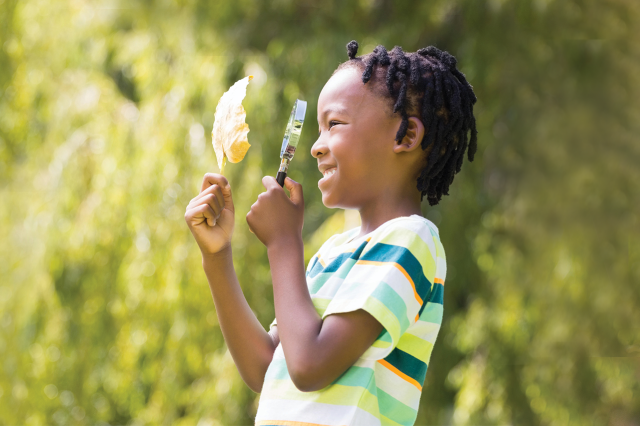
Community Science Project
How crowd-sourced science projects like the City Nature Challenge fuel research to protect our planet
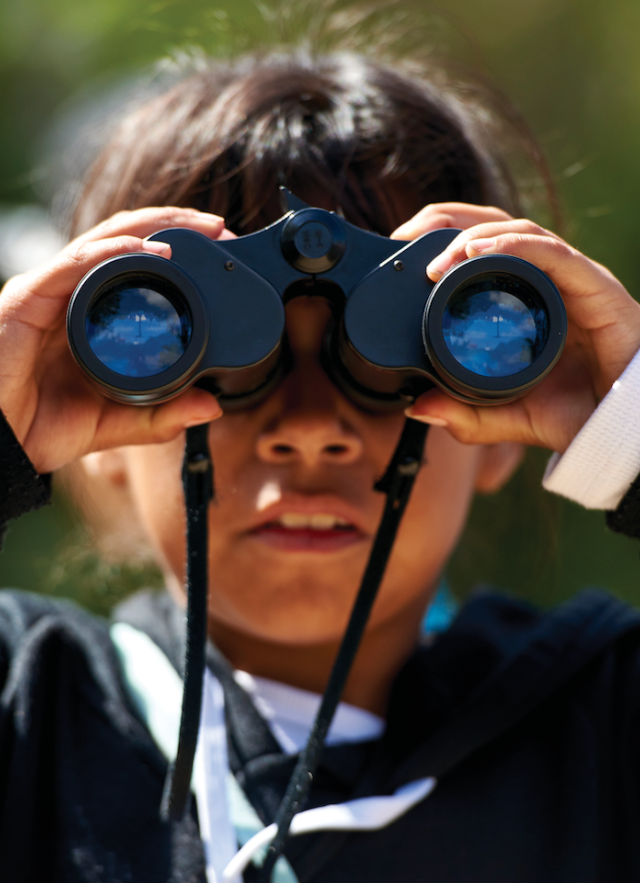
Published April 6, 2023
What began as a friendly competition between Los Angeles and San Francisco has blossomed into a worldwide week-long hunt for wild critters, plants, fungi, and everyone’s favorite–slime molds–to be photographed and uploaded to the crowd-sourced science platform iNaturalist. More than pretty pictures, these observations are making an impact in conservation and research happening around the world–and at institutions like the Natural History Museum.
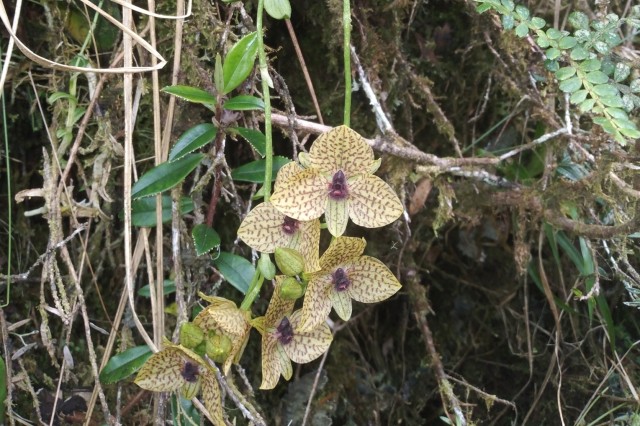
A recently discovered orchid species from Coroico, Bolivia
iNaturalist photo 192188278 by alfredo_f_fuentes (CC-BY-NC)
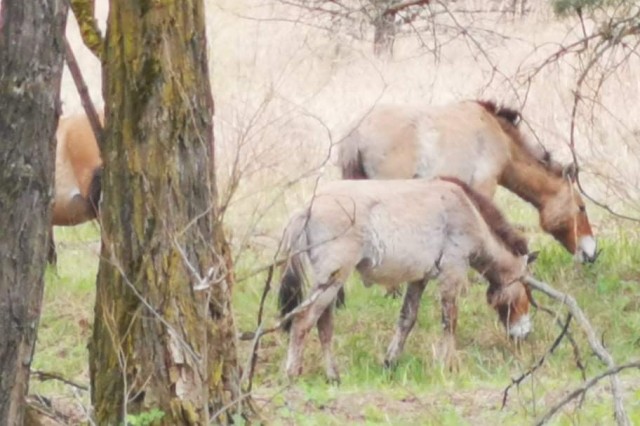
Observation © Vasyliuk Oleksij
The endangered Przewalski's Horse from Ivankivs'kyi, Ukraine
iNaturalist photo 192160472 by Vasyliuk Oleksij (CC-BY)
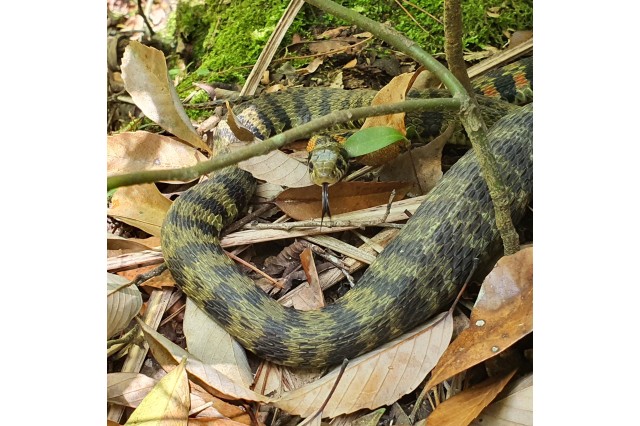
A tiger keelback from Jeju in South Korea (South Korea joined the CNC for the first time in 2022)
iNaturalist photo 192094201 by 이원재 (CC BY-NC)
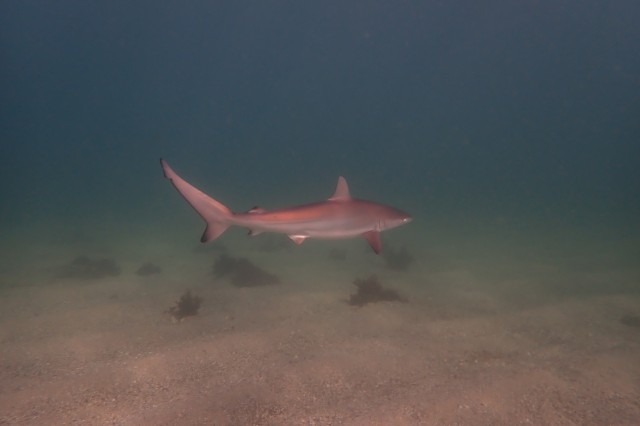
An endangered dusky shark from Sydney, Australia (this species is fished for oil, meat, and fins)
iNaturalist photo 192857157 by Robin Laws-Wall (CC BY-NC)
1 of 1
A recently discovered orchid species from Coroico, Bolivia
iNaturalist photo 192188278 by alfredo_f_fuentes (CC-BY-NC)
The endangered Przewalski's Horse from Ivankivs'kyi, Ukraine
iNaturalist photo 192160472 by Vasyliuk Oleksij (CC-BY)
Observation © Vasyliuk Oleksij
A tiger keelback from Jeju in South Korea (South Korea joined the CNC for the first time in 2022)
iNaturalist photo 192094201 by 이원재 (CC BY-NC)
An endangered dusky shark from Sydney, Australia (this species is fished for oil, meat, and fins)
iNaturalist photo 192857157 by Robin Laws-Wall (CC BY-NC)
In 2022, more than 67,000 people made 1,694,877 observations worldwide, representing more than 50,000 species, including 2,244 rare and endangered species. Each year brings more cities and more participants to the CNC, which means we’ll likely see even more observations in 2023. From May 2–7, researchers identify these observations as close to the species level as they can get from the images, but what happens then? That’s when the real science gets going.
“The City Nature Challenge is an opportunity for all Los Angeles County residents to slow down, put on their nature eyes, and notice just how many wild plants, animals, fungi, and slime molds can be found in their own neighborhoods--all while engaging in friendly competition with cities around the world and helping researchers answer important questions about biodiversity in urban areas.”
Amy Jaecker-Jones, Community Science Program Manager
Every photo submitted has the potential to impact research and conservation policies. All those observations combined create datasets that would be completely unavailable to researchers like the curators working at NHM, and those new datasets are opening doors to new research.
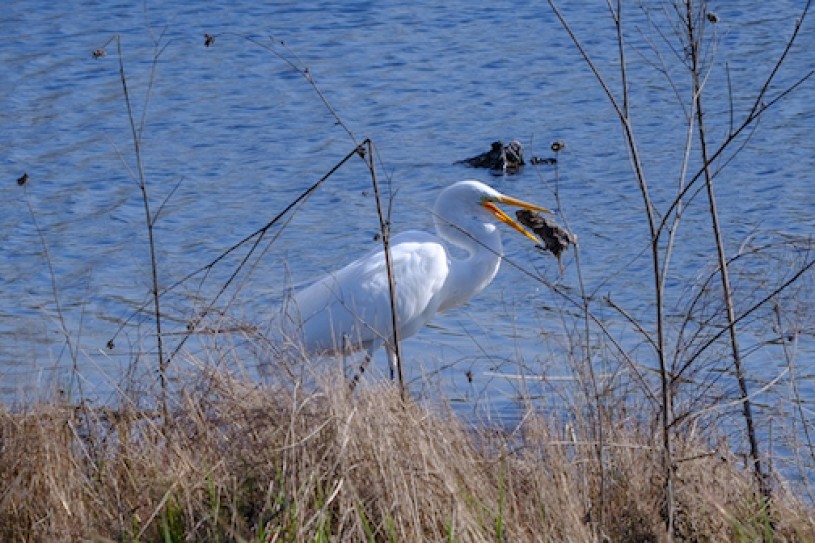
Much like museum specimens, each crowd-sourced observation is a record of an organism at a specific time and place, and the more records you have, the more you can say and study about those organisms and the environment they live in–whether it’s the bottom of the ocean or just around the block.
Here are some of the ways NHM’s scientists are using all that precious data to protect our planet and how your observations can help their research. Some of the curators in NHM’s Urban Nature Research Center (UNRC) have shared some of the research that’s already been made possible by these kinds of observations, along with some avenues for future research and what they’re looking for right now.
Community science observations have been crucial to identifying non-native species. Non-natives are any species brought into the region directly or indirectly through human activity and now living outside their natural distribution. Invasive species cause harm to the environment, the economy, or even human health. Finding non-native species quickly is the best way to prevent them from becoming invasive in the first place, what conservation biologists call “early detection-rapid response”.
Non-native species frequently turn up in residential or commercial areas first–exactly the places where professional biologists are unlikely to survey, making it hard for them to discover non-native species. Community scientists who live and work in these areas open a window into places that biologists like Pauly might not have access to or would be unlikely to go to search for a non-native species. The observations they’ve shared have revealed species like green anoles native to the Southern U.S. and African five-lined skinks among many others showing up here in Southern California.
In the case of the African five-lined skink, Pauly and the original observer met with local community members for guidance and prevented the African five-lined skink from establishing itself in L.A. ecosystems. They were able to successfully eradicate the non-native species–a rare achievement outside of island ecosystems where the ocean acts as a barrier. This work demonstrated that iNaturalist can be especially useful for quickly detecting non-native species, representing a possible model for future efforts.
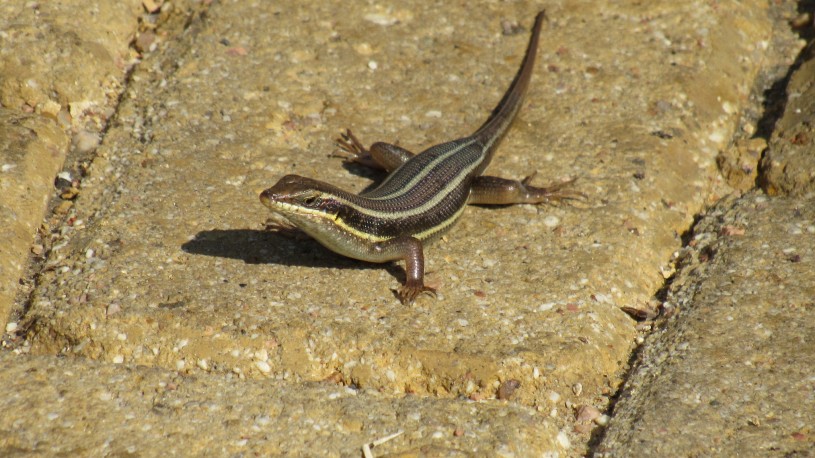
A lot of local wildlife is literally in Angelenos’ backyards, but those backyards are also private property. To conserve that wildlife, biologists like Pauly need to understand how urbanization is impacting local species like SoCal’s widespread–but secretive–alligator lizards.
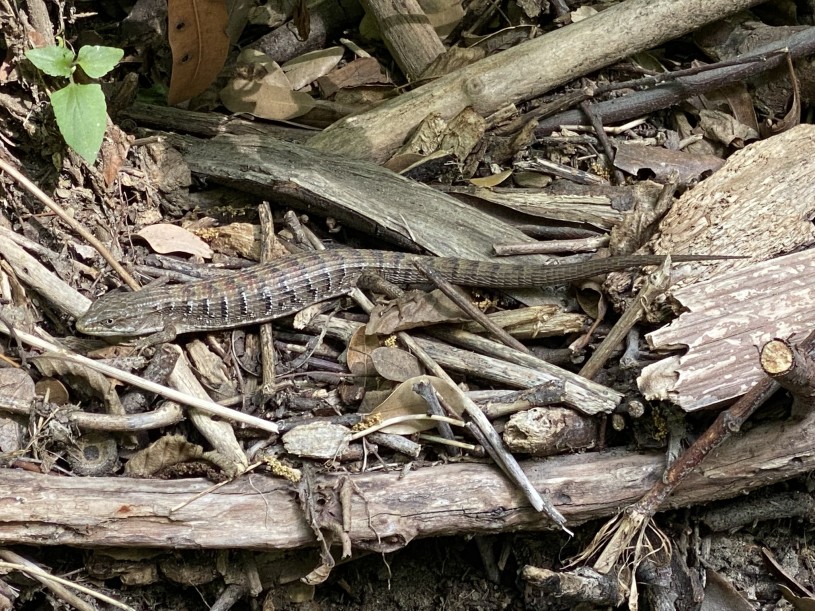
CNC observations helped Pauly and his coauthors discover the human-caused threats facing these elusive lizards. Photos revealed they were more likely to have popped their tails off–a defense meant to distract predators, likely house cats–but were less likely to suffer from parasites like ticks–ironically, likely due to urban pets being treated for the parasites. Residents’ observations helped scientists understand how species are making it in the suburbs and the cities–and what we can do to help them thrive.
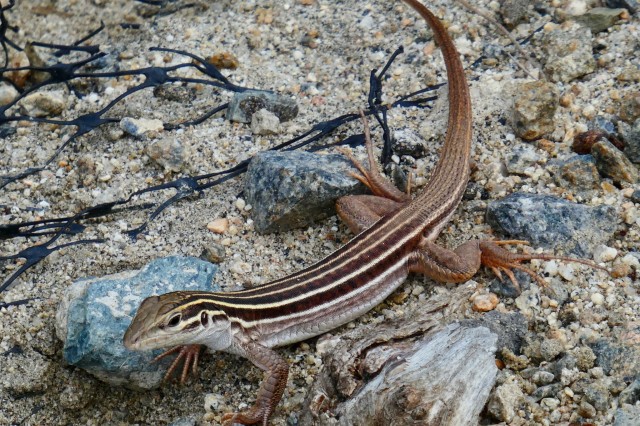
iNaturalist observations contributed to the RASCals project were used in two papers documenting the introduction and expansion of the Sonoran spotted whiptail (pictured above) in Southern California.
iNaturalist photo 138536799 by dlbowls (CC BY-NC)
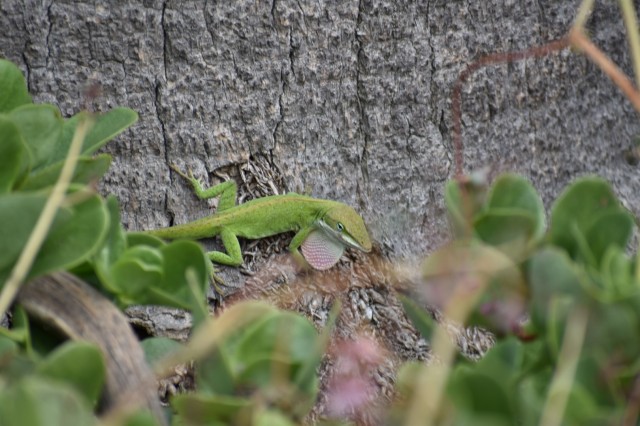
Partnering with community scientists means more observations and that can mean unexpected discoveries, like the 2014 discovery of green anoles (pictured above) in the Greater Wilshire/Hancock Park neighborhood, abutting the Wilshire Country Club. Returning to the neighborhood, Pauly discovered a well-established population across multiple blocks. At that time, it was the only population of the lizard native to the southeastern U.S. in L.A. County and the second in the state. This species gets moved around in the nursery and pet trades. Pauly and the community scientist who made the original observation co-authored a scientific paper about this discovery.
iNaturalist photo 79942474 by Elizabeth Praetz
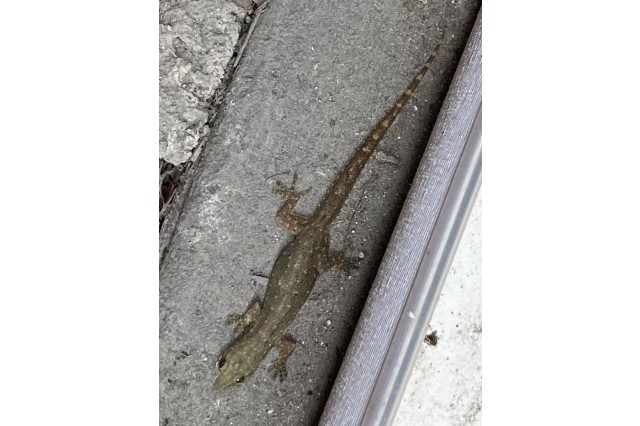
Photos and more photos please: Indo-Pacific House Geckos in Los Angeles and Orange Counties
Glen Yoshida of Torrance (Los Angeles County) and Bob Worrell of Lake Forest (Orange County) demonstrated that biodiversity discoveries can be made anywhere when they photographed geckos living on the walls of their homes and sent those photos to NHM. Glen continues to track the small population in his neighborhood by submitting photos to the RASCals project on iNaturalist.
iNaturalist photo 177589462 by Glen Yoshida, used with permission
1 of 1
iNaturalist observations contributed to the RASCals project were used in two papers documenting the introduction and expansion of the Sonoran spotted whiptail (pictured above) in Southern California.
iNaturalist photo 138536799 by dlbowls (CC BY-NC)
Partnering with community scientists means more observations and that can mean unexpected discoveries, like the 2014 discovery of green anoles (pictured above) in the Greater Wilshire/Hancock Park neighborhood, abutting the Wilshire Country Club. Returning to the neighborhood, Pauly discovered a well-established population across multiple blocks. At that time, it was the only population of the lizard native to the southeastern U.S. in L.A. County and the second in the state. This species gets moved around in the nursery and pet trades. Pauly and the community scientist who made the original observation co-authored a scientific paper about this discovery.
iNaturalist photo 79942474 by Elizabeth Praetz
Photos and more photos please: Indo-Pacific House Geckos in Los Angeles and Orange Counties
Glen Yoshida of Torrance (Los Angeles County) and Bob Worrell of Lake Forest (Orange County) demonstrated that biodiversity discoveries can be made anywhere when they photographed geckos living on the walls of their homes and sent those photos to NHM. Glen continues to track the small population in his neighborhood by submitting photos to the RASCals project on iNaturalist.
iNaturalist photo 177589462 by Glen Yoshida, used with permission
Right now, Pauly is looking for photos and videos of alligator lizards mating, one of the behaviors that biologists like him might never encounter on their own (Pauly still hasn’t seen it happen with his own eyes), but are able to study thanks to the many watchful eyes of community scientists whose observations have produced probably the largest dataset ever of mating behavior in a lizard or snake.
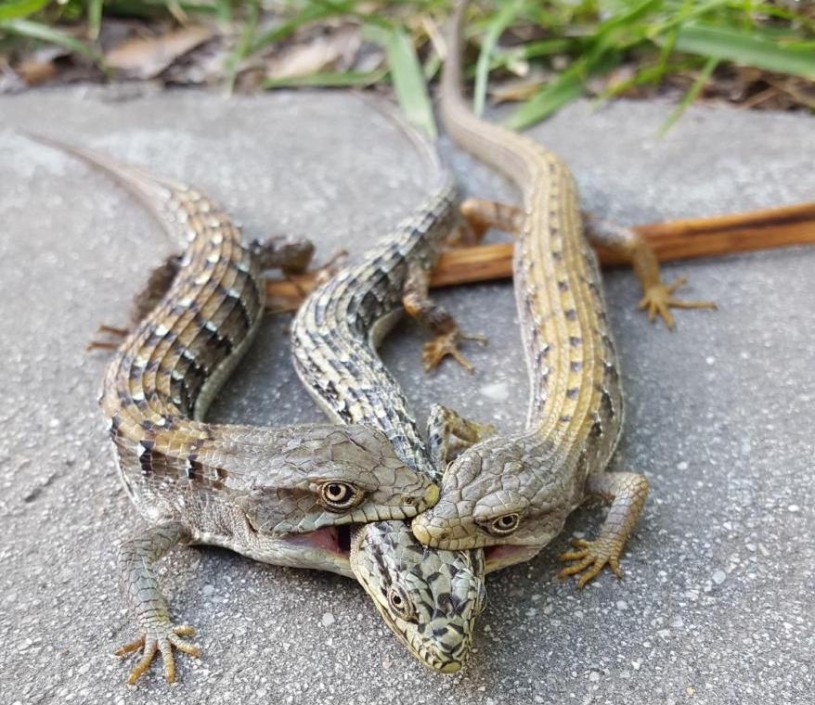
Observations of alligator lizard mating help researchers understand how weather–and the increasingly erratic weather we’re experiencing due to climate change–might impact when these lizards breed. “These observations demonstrate that crowd-sourced photographs and data collection can revolutionize the field of animal behavior,” says Pauly. Almost every year, participants in the CNC upload new observations of this rarely observed behavior.
Every observation of alligator lizards mating is important.”
Dr. Greg Pauly
Photos from the seasonal community science SnailBlitz project and the ongoing SLIME project (Snails and slugs Living In Metropolitan Environments, obviously) have contributed to papers identifying introduced species of snails and slugs.
Identifying these introduced species early–especially being able to identify where they might be parking their shells through location data in iNaturalist–can help protect the natural habitat and native species of Southern California by making it easier for policymakers to take protective measures around a crop or imported good that might be threatened by or carrying potentially invasive slugs or snails.
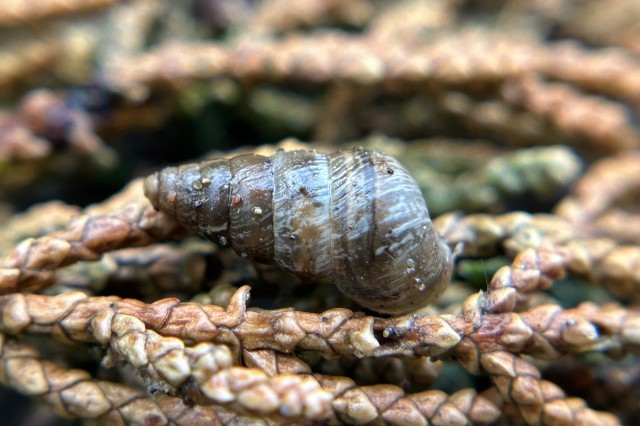
iNaturalist users documented several land snail species: Cochlicella barbara (pictured above), Xerotricha conspurcata, and Arion hortensis that were new regional (California county) records. The community scientists collaborated with Vendetti on this scientific paper. This research demonstrated how effective community science projects like SLIME could be at detecting non-native species of snails. This helps researchers like Vendetti to understand the potential threats from non-native species and helps policymakers make more informed decisions that might prevent future introductions.
iNaturalist photo 261635814 by Alex Heyman
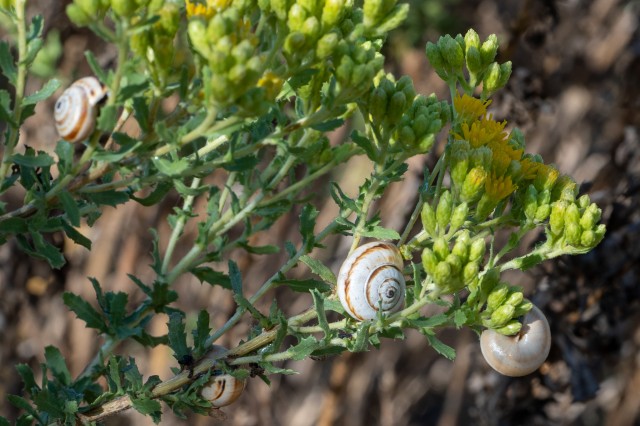
Documenting non-native species is crucial to protecting our local species and environments. Vendetti used iNaturalist observations to locate and collect the specimens used for this paper documenting the introduction of the pestiferous land snail Theba pisana, the white Italian snail (pictured above).
iNaturalist image 52084401 by Jesse Rorabaugh
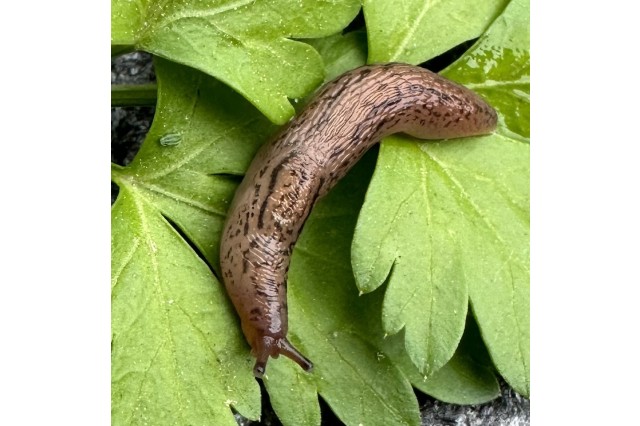
This paper was also a collaboration with members of the iNaturalist community whose observations of the slug species: Ambigolimax nyctelius [now Ambigolimax parvipenis] were new to Southern California, another example of how well community science platforms help identify non-native species quickly.
iNaturalist photo 263711460 by mimilikesbirds, used with permission
1 of 1
iNaturalist users documented several land snail species: Cochlicella barbara (pictured above), Xerotricha conspurcata, and Arion hortensis that were new regional (California county) records. The community scientists collaborated with Vendetti on this scientific paper. This research demonstrated how effective community science projects like SLIME could be at detecting non-native species of snails. This helps researchers like Vendetti to understand the potential threats from non-native species and helps policymakers make more informed decisions that might prevent future introductions.
iNaturalist photo 261635814 by Alex Heyman
Documenting non-native species is crucial to protecting our local species and environments. Vendetti used iNaturalist observations to locate and collect the specimens used for this paper documenting the introduction of the pestiferous land snail Theba pisana, the white Italian snail (pictured above).
iNaturalist image 52084401 by Jesse Rorabaugh
This paper was also a collaboration with members of the iNaturalist community whose observations of the slug species: Ambigolimax nyctelius [now Ambigolimax parvipenis] were new to Southern California, another example of how well community science platforms help identify non-native species quickly.
iNaturalist photo 263711460 by mimilikesbirds, used with permission
Just as important, identifying where endangered and threatened native species are hanging on can help add much-needed support to conservation efforts, like in the case of the San Gabriel chestnut snail (Glyptostoma gabrielense) and the California shoulderband snails (Helminthoglypta sp.). These native SoCal snails are generally understudied, and every new observation helps researchers like Vendetti understand their ranges and further bolster calls to protect habitats.
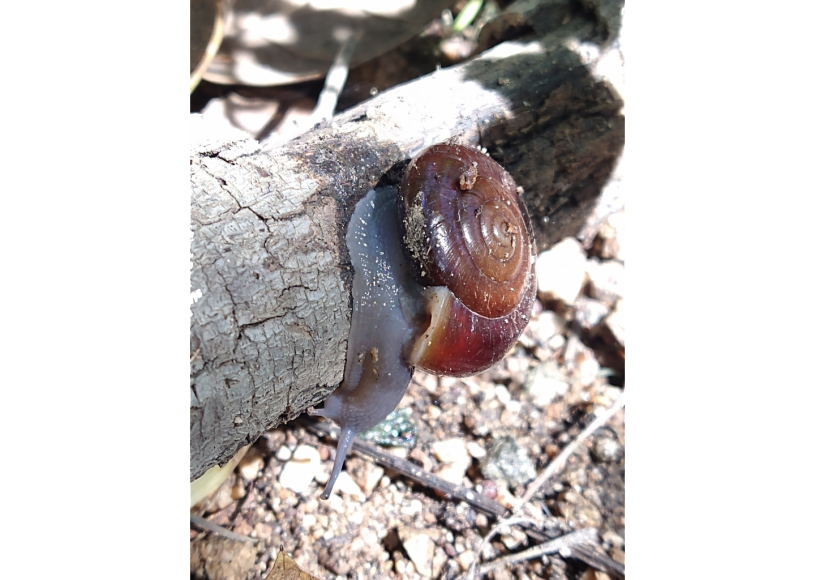
For what I'm working on now, any good, close-up, and focused images that include the shell and body would be best. Usually, a focused image of the whole body of a snail or slug is enough to get a good ID. For Helminthoglypta snails, it is especially important to get a good image of the sculpture of the shell. Subtle differences in shell sculpture are sometimes enough to identify species that otherwise look almost the same.”
Dr. Jann Vendetti
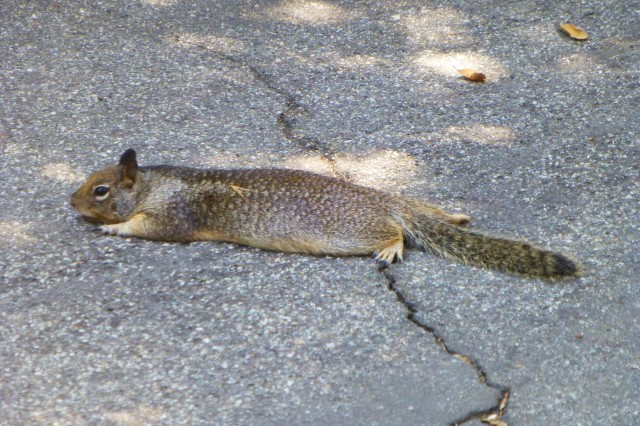
A California ground squirrel (Otospermophilus beecheyi) splayed out to keep cool, a behavior called 'heat dumping'.
iNaturalist photo 209685379 by Kimball Garrett
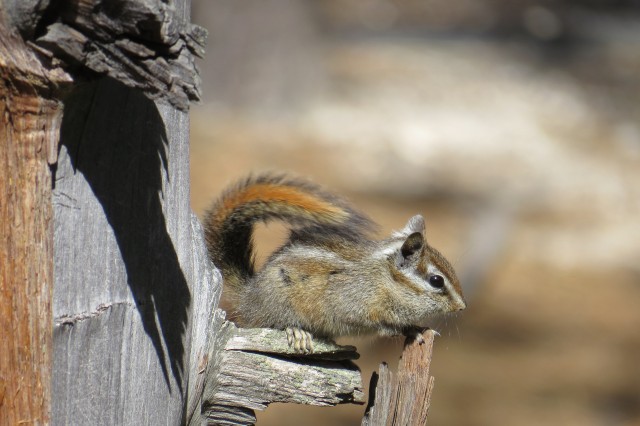
A Merriam's chipmunk (Neotamias merriami) observation from Angeles National Forest
iNaturalist photo 7158333 by James M. Maley (CC BY)
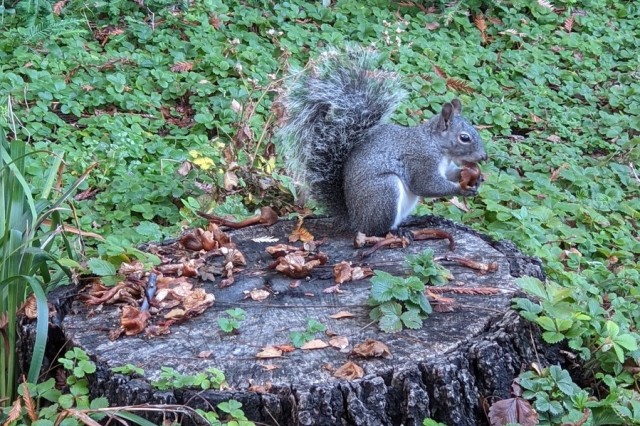
A western gray squirrel (Sciurus griseus) observed at California Botanic Garden
iNaturalist photo 171584211 by Andy Kleinhesselink
1 of 1
A California ground squirrel (Otospermophilus beecheyi) splayed out to keep cool, a behavior called 'heat dumping'.
iNaturalist photo 209685379 by Kimball Garrett
A Merriam's chipmunk (Neotamias merriami) observation from Angeles National Forest
iNaturalist photo 7158333 by James M. Maley (CC BY)
A western gray squirrel (Sciurus griseus) observed at California Botanic Garden
iNaturalist photo 171584211 by Andy Kleinhesselink
She is now helping to manage the Southern California Squirrel Survey, an NHM community science project tracking all those bushy-tailed beasts and their less well-endowed cousins (chipmunks) scurrying up the trees and fences in your neighborhood. Her recent poster, coauthored with other NHM colleagues, outlines where squirrels and chipmunks have been found across the region, but she’s looking to build out the Survey with more observations and hoping to identify where these different squirrels and chipmunks have taken up residence–in urban backyards and further afield.
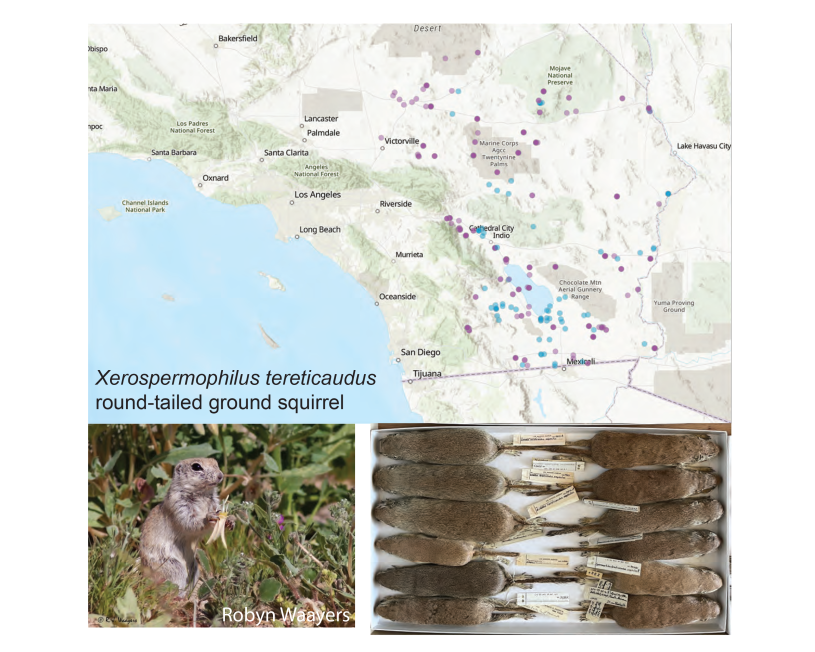
Using data from iNaturalist, Bell and other NHM researchers were able to map out where all those nutty little mammals are living, and getting more observations of squirrels and chipmunks beyond the fox squirrel will go a long way to figuring out where Southern California squirrels are thriving and where they are not.
What do you want to see? “More squirrels! It would be great to get observations of more squirrels that aren't fox squirrels, especially in areas that are on the edge or adjacent to urbanized/developed areas.”
Dr. Kayce Bell.
While museum specimens like NHM’s are the gold standard for keeping track of species across time and geography– community scientists’ observations for projects like the CNC can beef up numbers and fuel conservation strategy. Just like researchers a hundred years ago could not know how modern scientists are using advanced tools like scanning electron microscopes and DNA analysis to get new information out of century-old museum collections, exactly how future researchers might use crowd-sourced observations is impossible to say, but iNaturalist observations are already playing a crucial role in the research of many NHM scientists.
Using powerful microscopes and other analytical tools, Shultz uncovers the mysteries of how birds achieve their incredible colors among other feathery feats. For Shultz, crowd-sourcing images offers the chance to analyze truly impressive displays of atypical plumage–things like leucistic (albino) birds for example.
I’m looking for observations of birds with atypical feathers. So keep a look out for oddly colored feathers, but remember that every observation can be valuable for research.”
Dr. Allison Shultz
A single researcher hardly ever encounters such atypical feathers on their own, but the 1.6 million observers contributing to iNaturalist mean there are more chances to find rare plumage than ever before, even if any individual user isn’t looking for it. iNaturalist observations create sample sizes large enough for scientists like Shultz to study bird biology in new ways, and those avenues of discovery are just ramping up.
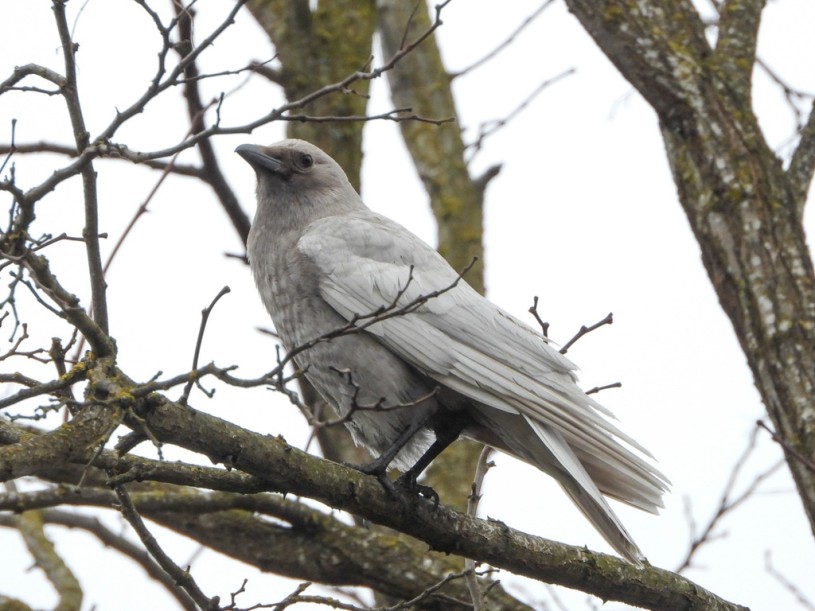
“For example, birds lacking melanin might uncover pigments and patterns that are otherwise hidden,” says Shultz. “Or, you can look at what happens to feathers over time when they are missing important components of their pigments/structure. Or, seeing how living in less than pristine environments might actually cause birds to have more mutations (e.g., DNA damage), resulting in feathers losing color. There are so many possibilities!”

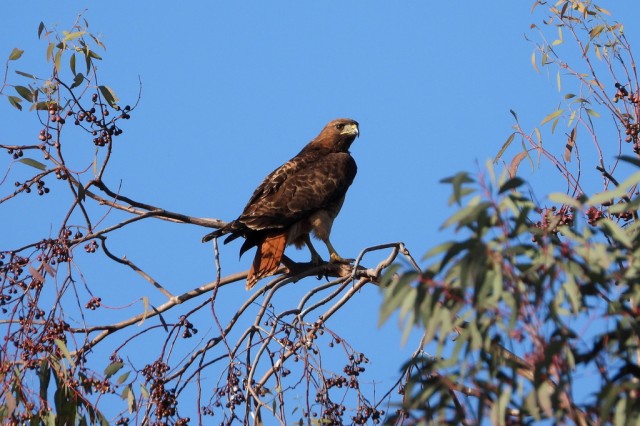
Shultz and fellow UNRC researcher Dr. Dan Cooper used community science observations of raptors–birds of prey like falcons and hawks–to see how these avian hunters were adapting to life in big cities. They found that raptors on the smaller side who weren't too picky survived best. They reported their findings in this scientific paper. A red-tailed hawk (Buteo jamaicensis) pictured above
iNaturalist photo 69403699 by Nurit Katz, used with permission
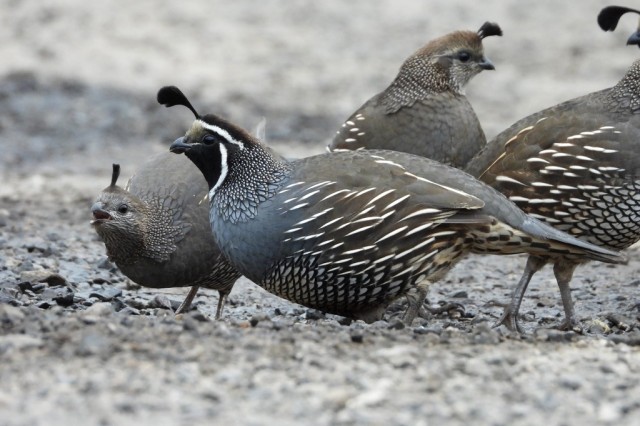
In a separate study, Cooper used crowd-sourced observations of urban wildlife to compare biodiversity across cities of varying size, finding that bigger cities lagged behind smaller cities in 'neighborhood biodiversity'. One of the species tracked was the California quail (Callipepla californica, pictured above).
iNaturalist photo 264157151 by Nurit Katz, used with permission
1 of 1
Shultz and fellow UNRC researcher Dr. Dan Cooper used community science observations of raptors–birds of prey like falcons and hawks–to see how these avian hunters were adapting to life in big cities. They found that raptors on the smaller side who weren't too picky survived best. They reported their findings in this scientific paper. A red-tailed hawk (Buteo jamaicensis) pictured above
iNaturalist photo 69403699 by Nurit Katz, used with permission
In a separate study, Cooper used crowd-sourced observations of urban wildlife to compare biodiversity across cities of varying size, finding that bigger cities lagged behind smaller cities in 'neighborhood biodiversity'. One of the species tracked was the California quail (Callipepla californica, pictured above).
iNaturalist photo 264157151 by Nurit Katz, used with permission
iNaturalist launched in 2008 as part of a UC Berkley Master’s project, and the City Nature Challenge was only founded in 2016. iNaturalist users and observations continue to grow exponentially, just as the CNC adds new cities and participants every year. It’s a virtuous cycle of growth. CNC helps create new community scientists while adding more observations from more parts of the world, and all those accumulated observations will continue to become even more useful over time, making new research possible and expanding our understanding of biodiversity in our cities and on our planet.
That means there are more than 7 million species unknown to science. Some of those unknown species are probably waiting in museum collections like NHM’s for the careful eye of expert taxonomists, but others are flying, crawling, creeping, slithering (you get the idea), in the wild and not-so-wild places all around us.
Through carefully studying and comparing anatomical features to known scorpions, the pair eventually realized that these were each new to science. The species they named Paruroctonus soda (after Soda Lake, not any beverage) and Paruroctonus conclusus (another iNaturalist observation that went unidentified for around a year) could have remained some of the 7 million or so unidentified organisms–their ranges are limited to the salty, dried lake beds found in the desert called playas. Paruroctonus soda’s range is entirely within the Carrizo Plain National Monument, but P. conclusus’s territory is unprotected. A construction project could wipe out the entire species, and we might be none the wiser. Crowd-sourced science observations made their discovery possible along with any attempts to conserve and study them.
These are just a tiny fraction of the research and discoveries made possible by projects like the City Nature Challenge and platforms like iNaturalist. The impressive list of publications and discoveries in community science projects like the CNC will only grow over time. So from April 28–May 1, be sure to slow down, put on your nature eyes, and take some pictures of what you see out there. Your photo makes a difference.